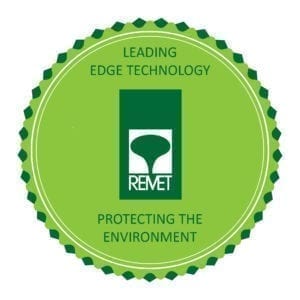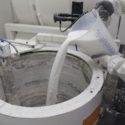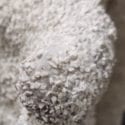Pattern Wash, A Technical Briefing
Good slurry adhesion during the application of the primary coat of a ceramic shell is critical to achieving excellent surface finish of precision investment castings. Residual mold release can lead to casting defects such as lifting or buckling of the prime coat, and subsequent bulging on the surface of castings. Good pattern wash practices and maintenance of the solvent leads to consistency and cleanliness of wax pattern surfaces.
Types of Pattern Wash Available to the Investment Caster
Current foundry practices for cleaning and etching wax patterns, for the removal of silicone oil or other release agents before the primary ceramic coat is applied include the use of:
a) The use of high flash point petroleum based hydrocarbon and citrus-based (d-limonene) solvents; and
b) Detergent emulsions; or
c) A mixture of both.
(A) Petroleum based hydrocarbon and citrus-based (d-limonene) solvents
Pattern washes of this type have replaced the dangerous low flash point solvents such as mineral spirits, methyl ethyl ketone, acetone, toluene, xylene, and chlorinated solvents, although, still pose a potential harm to operators.
Some pattern wash solvents are complex mixtures containing other chemicals that act as etchants on the surface of a wax pattern. Current formulations are water soluble, dilutable with deionized water (for better economy) and recyclable.
These pattern wash materials work by dissolving silicone and grease, and usually the topmost layer of wax too. After, dipping, washing off or blowing off, often with an air-line or air-knife, the solvent is left to evaporate clear. Leaving a wax pattern that is grease-free with a slightly matt finish; sometimes a little lighter in shade as dye present at the surface may have been denuded.
An apparent roughness of the surface, can lead to some concerns. However, in most cases (unless massively over cleaned) the surface is much better than the finished surface of the casting, which is frequently conferred by the shot/sand blasting process used in initial clean up.
If there has been a measurable degradation of the surface, the level of etch can be reduced through a shorter contact time of a dilution.
The solubility of polymers depends on the chemical bonds present in the backbone chain and their compatibility with those of the solvent. The Hildebrand solubility parameter is commonly used to evaluate polymer solubility. The closer the value of the parameters, the more likely dissolution will occur.
(B) Detergent / Detergent Emulsions
The use of hydrocarbon pattern washes has declined over the past 20 years, as foundry’s progress to become ever safer workplaces. As can be appreciated, a solution of soap and water may be viewed as a less risky option, even though its efficacy may be less than a hydrocarbon solvent.
Detergent pattern washes, usually comprise of a concentrated detergent added at a relatively low level to a tank of water. They work without any interaction with the wax pattern’s surface per se. Although there are many available varieties, the detergent consist of a sodium or potassium fatty acids salts, produced by the hydrolysis of fats in a chemical reaction called saponification. Each detergent molecule has a long hydrocarbon ‘tail’, with a carboxylate ‘head’. In water, the sodium or potassium ions float free, leaving a negatively-charged head.
Its ability to act as an emulsifying agent, allows it to be an excellent cleaner. This is due to an emulsifier’s ability to disperse a liquid into another immiscible liquid. This means that while silicone oil (which attracts dirt) does not naturally mix with water, soap can suspend oil/dirt in such a way that it can be removed.
The organic part of a natural soap is a negatively-charged, polar molecule. It’s hydrophilic (water loving) carboxylate group (-CO2) interacts with water molecules via ion-dipole interactions and hydrogen bonding. The hydrophobic (water-fearing) part of a soap molecule, its long, nonpolar hydrocarbon chain, does not interact with water molecules. The hydrocarbon chains are attracted to each other by dispersion forces and cluster together, forming structures called micelles. In these micelles, the carboxylate groups form a negatively- charged spherical surface, with the hydrocarbon chains inside the sphere. Because they are negatively charged, soap micelles repel each other and remain dispersed in water.
Grease and oil are nonpolar and insoluble in water. When the detergent and soiling oils are mixed, the nonpolar hydrocarbon portion of the micelles break up the nonpolar oil molecules. A different type of micelle then forms, with nonpolar soiling molecules in the center. Thus, grease, oil, and the ‘dirt’ attached to them are caught inside the micelle and can be rinsed away with excess water.
The major issue with this type of pattern wash is that the process requires time for agitation to work effectively, so frequently air is bubbled through the tank allowing the oil/detergent emulsion to be separated to float to the surface where it is skimmed away or allowed to weir to a collection tank. In these instances, detergents with very low film-forming characteristics have to be used in order to avoid excess foam.
Inherent within this type of pattern wash is a major issue; the process requires time for agitation to work effectively. Air is frequently bubbled through the tank allowing the oil/detergent emulsion to separate and float to the surface. It is then skimmed away or allowed to weir to a collection tank. To avoid the build-up of excessive foam, select detergents with very low film-forming characteristics.
This process is at the heart of tertiary or composite systems: a mixture of solvent and emulsifier.
(C) Tertiary/Composite Pattern Washes
The final type of pattern wash overcomes the health and safety concerns of straight solvents and low effectiveness of detergents. Usually comprising a proprietary mixture of light oil solvents and dissolved detergents. The wax patterns are immersed in the pattern wash where the solvent acts in the manner originally described in (A), from here the parts are cleaned in water where the detergent rapidly emulsifies the solvent, dissolved silicone oil and grime in the manner described in above.
Composite pattern washes reduce the issues of Volatile Organic Compound (VOC) emission, operator exposure and the wax defect “fish-eyes” associated with pure solvents, while enhancing the effectiveness of a detergent based system.
Current Methods for Monitoring Effectiveness of Pattern Wash
The consistency and cleanliness of the surface of wax patterns require good pattern wash practices and maintenance of the solvents. Repeated dipping of patterns in pattern wash tanks leads to a drop in their solvency power, reducing their effectiveness for cleaning and etching over time. A regular monitoring schedule should be in place for each cleaning tank, to ensure contaminated wax patterns do not move downstream for application of the prime coat in the shell room.
Current approaches to monitoring efficacy include:
(A) Slurry Wetting Test
- Dip a clean wax bar or pattern into primary binder slurry to its mid-point.
- Remove from binder and observe the surface.
Good wetting indicators would be a uniform coating with no slurry breaks. Whilst, poor wetting indicators include wax peaks through the slurry coat, slurry breaks and forms holes.
Ideally to perform this test, wax bars of the same grade as used in pattern production would be used which is not always practical. Pulling slurry samples from slurry mixing tanks is not always convenient. In addition, this test is qualitative, subject to interpretation of the user, and does not provide a true measure of solvency power.
(B) Styrofoam Cup Dissolution Test
- Pour pattern cleaner into Styrofoam cup.
- Set Styrofoam cup in a pan.
- Record number of minutes it takes for cleaner to dissolve through cup.
In this approach, a baseline must be recorded with specific pattern wash solvent before it is used in production and requires that same size cups be used for accurate comparison. This test is also subjective with regards to recording the time at which the solvent seeps through the Styrofoam cup. Dilution of pattern wash with water may render this ineffective or require much longer dissolution time to establish end point. Cleanup and disposal of the solvent soaked cup is a non-value added cost to the foundry.
There are a number of variables that may exist within a cleaning tank including multiple types of release agents, number of dips with wax patterns, quantity of wax dissolved, skimming off and topping off wash tank with solvent and/or water that make determining efficacy of the pattern difficult using current technologies.
Remet has developed a Chromatographic method of measuring effectiveness at any time by measuring the Kauri-Butanol Equivalence. For details of this new and innovative test for accurately determining solvent potency, please contact your local Remet territory manager.
< Back to case studies



